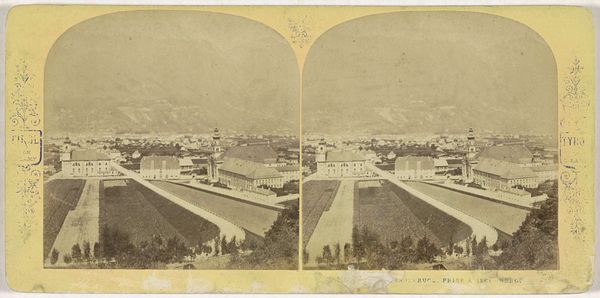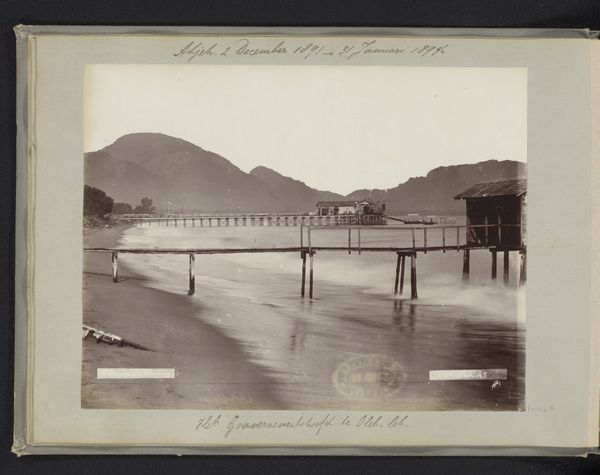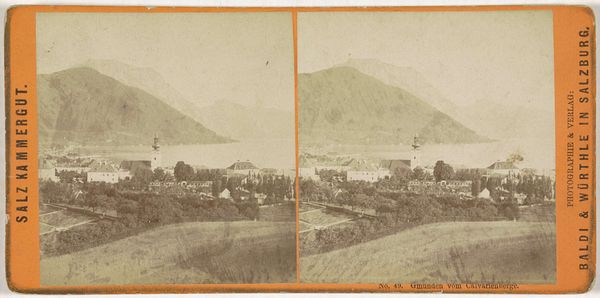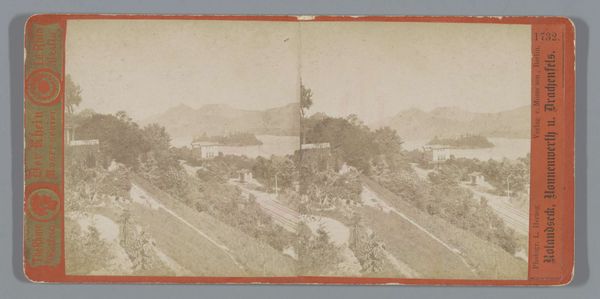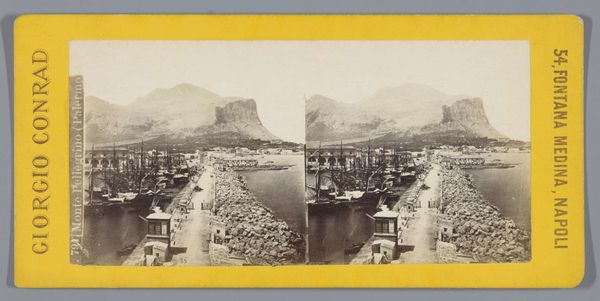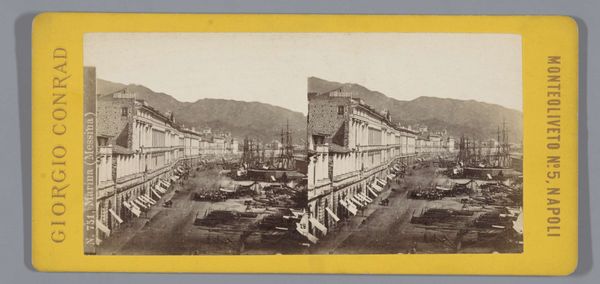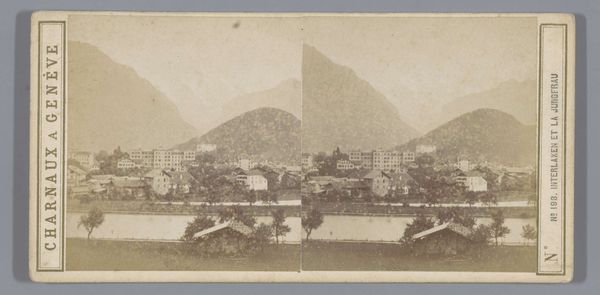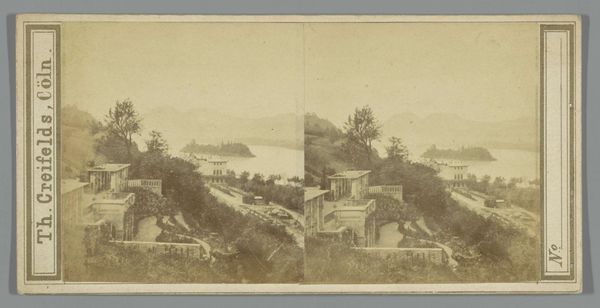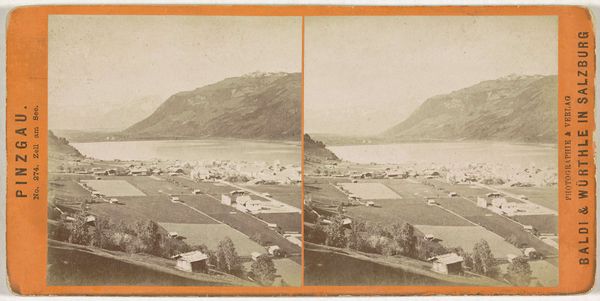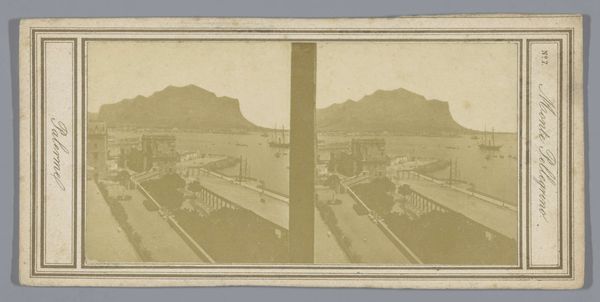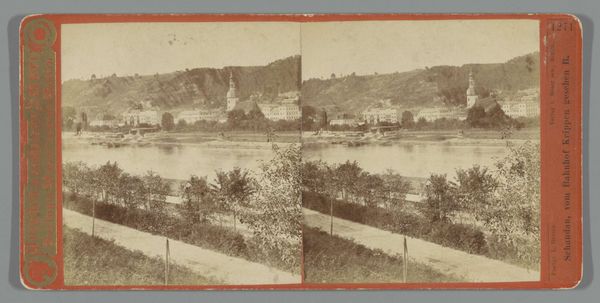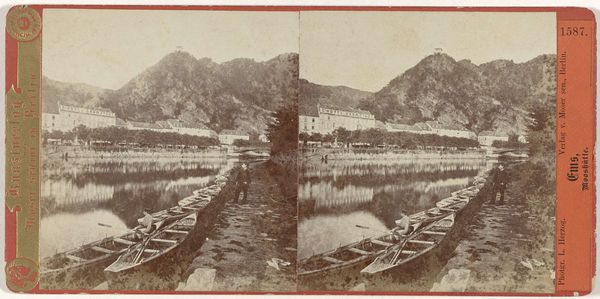
Foro Italico te Palermo, met op de achtergrond de Monte Pellegrino c. 1850 - 1870
0:00
0:00
Dimensions: height 85 mm, width 170 mm
Copyright: Rijks Museum: Open Domain
Editor: So, this is "Foro Italico te Palermo, met op de achtergrond de Monte Pellegrino" by Giorgio Conrad, taken sometime between 1850 and 1870. It’s an albumen print, giving it that sepia-toned, slightly dreamy quality. There’s this really formal promenade, but in the distance, those mountains feel quite wild. What stands out to you about this photograph? Curator: What I find striking is how this image, likely intended to celebrate urban progress, inadvertently captures the tension inherent in that progress. Consider the date. Mid-19th century was a period of intense socio-political upheaval in Sicily. Editor: How so? Curator: Think about it. The Bourbon monarchy was faltering, leading to Garibaldi’s landing and eventual unification with Italy. This photographic framing, prioritizing the Foro Italico, a symbol of imposed order and Italian dominance, pushes to the background the natural landscape – Monte Pellegrino. Does that natural feature potentially signify the pre-existing Sicilian identity and the traditional ways of life being slowly erased? The framing might be less about objective beauty and more about subtle ideological messaging. Editor: That’s fascinating! I hadn't considered that the composition might reflect political power dynamics. So, seeing the mountain pushed into the background makes you think about cultural erasure? Curator: Exactly. What is remembered versus what is deliberately forgotten? And photography, especially at this stage, wasn’t a neutral act, but one deeply implicated in constructing narratives of progress and power. Consider who this image was marketed to, and how it played into their understanding of place and identity. Editor: I’ll never look at a landscape photo the same way again! I came into this thinking about aesthetics, but you’ve made me think about the story *behind* the aesthetic. Curator: Precisely. And that is where art history meets contemporary social and cultural theory.
Comments
No comments
Be the first to comment and join the conversation on the ultimate creative platform.
